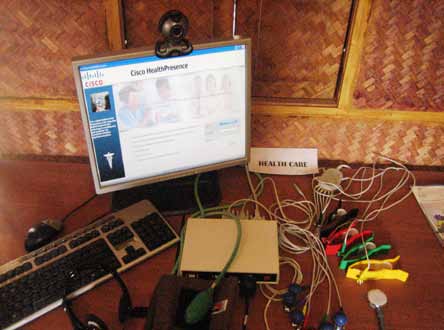Founded by a Yale trained team, India’s first teleradiology company, Teleradiology Solutions, has been serving America and Singapore since 2002. It was the first Indian company to get accredited by the Ministry of Health of Singapore. Now, its services have extended to remote parts of India, such as the Ramakrishna Mission Hospital in Arunachal Pradesh, for whom it has been doing free reads on a daily basis since 2007.

Through its Telrad foundation, the company offers services of remote radiology reads to hospitals, especially those in interior regions of India, where correct and timely diagnosis can make a huge and often lifesaving difference. It assists in setting up the infrastructure to receive patients’ medical diagnostic images like X-rays, MRI scans, CT scans and ultrasound scans, over the Internet from hospitals all over the world. The aim is to use technology to take high-quality diagnostics to patients everywhere, especially in areas that do not have access to specialist radiologists.
Apollo Hospitals’ telemedicine wing recently collaborated with Cisco to implement its HealthPresence Extended Reach solution across mini clinics in several remote areas. They demonstrated, through a village near Raichur, Karnataka, how telemedicine can revolutionise healthcare in rural areas. Using the newly implemented solution, doctors do not even have to go to a telemedicine room to answer a patient’s request—they can simply attend to the patient using a laptop connected to the Internet. Detailed clinical examination, investigation, prescription and even a recording of the entire process are possible.
These are just a few randomly chosen examples. Several other institutions including Sankara Netralaya have full-fledged telemedicine services in operation in India.
Has telemedicine truly arrived in india?
Transcontinental robotic surgery is not happening every day, but it is clear that telemedicine has made a beginning in India. We have the know-how, the basic infrastructure and, more than anything else, a very strong business case for the same. However, without a doubt, challenges remain to be overcome before telemedicine becomes a widely-accepted model of medical diagnosis and treatment.
One of the major challenges, though the situation has improved since the early days of telemedicine in 2002-03, is the lack of reliable broad band connectivity in the last mile, especially in remote areas. Another is the unavailability of skilled manpower to manage the centres in rural areas. Plus, there is the issue of quality control and standardisation, in a relatively nascent technical space. And, though many might not agree, there is the issue of technology still being costly and a tad complicated for the masses. Finally, there is the perpetual issue of resistance to a computer acting as a ‘doctor’!
Several solutions are in sight. WiMAX, for example, could solve the last-mile con-nectivity issue. The mobile phone (with its high penetration) could mature to become an important tool in the telemedicine framework, thereby making the service available to a greater population. Organisations, such as the Indian Space Research Organisation (ISRO), are experimenting with VSAT-based connectivity for telemedicine services in remote areas.






good visions